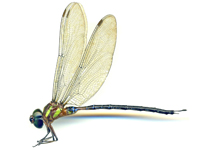Abstract
I investigate the taxonomy of frogs currently assigned to the single species Callulops doriae, which is unique in the genus for its warty, dark-spotted dorsum and large yellow or orange blotches in the groin and on the hidden surfaces of the thighs. I show that many species are currently encompassed under this single name, I remove Manthophryne neuhaussi from synonymy, and I describe four new species, three of which have long been in museum collections, and one of which is newly collected by me. Each of these new species is most readily distinguished by their unique color patterns, but additional morphological features―primarily morphometric―also serve to distinguish among them. Despite this partition of C. doriae, additional museum specimens cannot be assigned to any of the species treated here and certainly represent unrecognized species. But the poor states of preservation of some of these and the absence of color-pattern information in life preclude describing them until new material of each is available. Three of the six species treated herein, which occur in the southern portion of the Papuan Peninsula, were previously included in a molecular phylogeny, and inferred dates of divergence for them accord well with the geological dynamism of this region created by opening of the Woodlark Rift. In two cases, pairs of species are reported in general sympatry, and elevational data suggest that these species are likely to segregate elevationally where their ranges approach each other. At least four of the species treated herein are known to produce viscous glandular secretions that presumably deter predators, and I describe the defensive display of one of these, which I presume is aposematic.
References
Barbour, T. (1910) A new genus of Amphibia Salientia from Dutch New Guinea. Proceedings of the Biological Society of Washington, 23, 89–90.
Boulenger, G.A. (1888) Descriptions of new reptiles and batrachians obtained by Mr. H. O. Forbes in New Guinea. Annals and Magazine of Natural History, Series 6, 1, 343–346.
https://doi.org/10.1080/00222938809460739
Boulenger, G.A. (1898) Fourth report on additions to the batrachian collection in the Natural-History Museum. Proceedings of the Zoological Society of London, 1898, 473–482.
https://doi.org/10.1111/j.1096-3642.1898.tb03168.x
Boulenger, G.A. (1914) An annotated list of the batrachians and reptiles collected by the British Ornithologists’ Union Expedition and the Wollaston Expedition in Dutch New Guinea. Transactions of the Zoological Society of London, 20, 247–274.
https://doi.org/10.1111/j.1469-7998.1912.tb07833.x
Burt, C.E. & Burt, M.D. (1932) Herpetological results of the Whitney South Sea Expedition. VI. Pacific island amphibians and reptiles in the collection of the American Muserum of Natural History. Bulletin of the American Museum of Natural History, 63, 461–597.
Burton, T.C. (1986) A reassessment of the Papuan subfamily Asterophryinae (Anura: Microhylidae). Records of the South Australian Museum, 19, 405–450.
Dubois, A. (1988) Miscelanea nomenclatorica batrachologica (XVII). Alytes, 7, 1–5.
Frost, D.R. (2019) Amphibian Species of the World: an Online Reference. Version 5.5. American Museum of Natural History, New York, USA. American Museum of Natural History, New York. Available from: http://research.amnh.org/vz/herpetology/amphibia (accessed 12 January 2019)
Günther, R. (2009) Metamagnusia and Pseudocallulops, two new genera of microhylid frogs from New Guinea (Amphibia, Anura, Microhylidae). Zoosystematics and Evolution, 85, 171–187.
https://doi.org/10.1002/zoos.200900002
Günther, R. (2013) From a dwarf to a giant: Revalidation of Callulops valvifer (Barbour, 1910), (Amphibia, Anura, Microhylidae). Zootaxa, 3641 (3), 271–281.
https://doi.org/10.11646/zootaxa.3641.3.6
Günther, R., Stelbrink, B. & von Rintelen, T. (2012) Three new species of Callulops (Anura: Microhylidae) from western New Guinea. Vertebrate Zoology, 62, 407–423.
Kinghorn, J.R. (1929) Herpetological notes. No. I. Records of the Australian Museum, 17, 76–84.
https://doi.org/10.3853/j.0067-1975.17.1929.755
Kraus, F. (2012) Resurrection of Mantophryne microtis (Anura: Microhylidae) from synonymy. Herpetologica, 68, 256–265.
https://doi.org/10.1655/HERPETOLOGICA-D-11-00070.1
Kraus, F. (2013) Further range extensions for reptiles and amphibians from Papua New Guinea. Herpetological Review, 44, 277–280.
Kraus, F. & Allison, A. (2009) New species of frogs from Papua New Guinea. Bishop Museum Occasional Papers, 104, 1–36.
Mertens, R. (1930) Die von Dr. F. Kopstein auf den Molukken und einigen benachbarten Inseln gesammelten Froschlurche. Zoologische Mededelingen, 13, 141–150.
Noble, G.K. (1926) An analysis of the remarkable cases of distribution among the Amphibia, with descriptions of new genera. American Museum Novitates, 212, 1–24.
Oliver, P., Richards, S. & Tjaturadi, B. (2012) Two new species of Callulops (Anura: Microhylidae) from montane forests in New Guinea. Zootaxa, 3178 (1), 33–44.
https://doi.org/10.11646/zootaxa.3178.1.3
Richards, S.J., Burton, T.C., Cunningham, M.J. & Dennis, A.J. (1995) A new species of Callulops from New Guinea and comments on the status of C. humicola comptus (Zweifel) (Anura: Microhylidae: Asterophryinae). Transactions of the Royal Society of South Australia, 119, 157–162.
Rivera, J.A., Kraus, F. & Butler, M.A. (2017) Molecular phylogenetics and dating of the problematic New Guinea microhylid frogs (Amphibia: Anura) reveals elevated speciation rates and need for taxonomic reclassification. Molecular Phylogenetics and Evolution, 112, 1–11.
https://doi.org/10.1016/j.ympev.2017.04.008
Sabaj, M.H. (2016) Standard symbolic codes for institutional resource collections in herpetology and ichthyology: an online reference. Version 6.5. American Society of Ichthyologists and Herpetologists, Washington, D.C. Available from: http://www.asih.org/ (accessed 12 January 2019)
Taylor, B., Goodliffe, A.M. & Martinez, F. (1999) How continents break up: Insights from Papua New Guinea. Journal of Geophysical Research, 104, 7497–7512.
https://doi.org/10.1029/1998JB900115
van Kampen, P.N. (1923) The Amphibia of the Indo-Australian Archipelago. E.J. Brill, Ltd., Leiden, 304 pp.
Vogt, T. (1911) Reptilien und Amphibien aus Kaiser-Wilhelmsland. Sitzungsberichte der Gesellschaft Naturforschender Freunde zu Berlin, 1911, 420–432.
Werner, F. (1901) Beschreibung neuer Frösche aus Bolivia, Ostindien und Neu-Guinea. Zoologischer Anzeiger, 24, 97–103.
Zweifel, R.G. (1972) A revision of the frogs of the subfamily Asterophryinae family Microhylidae. Bulletin of the American Museum of Natural History, 148, 411–546.

